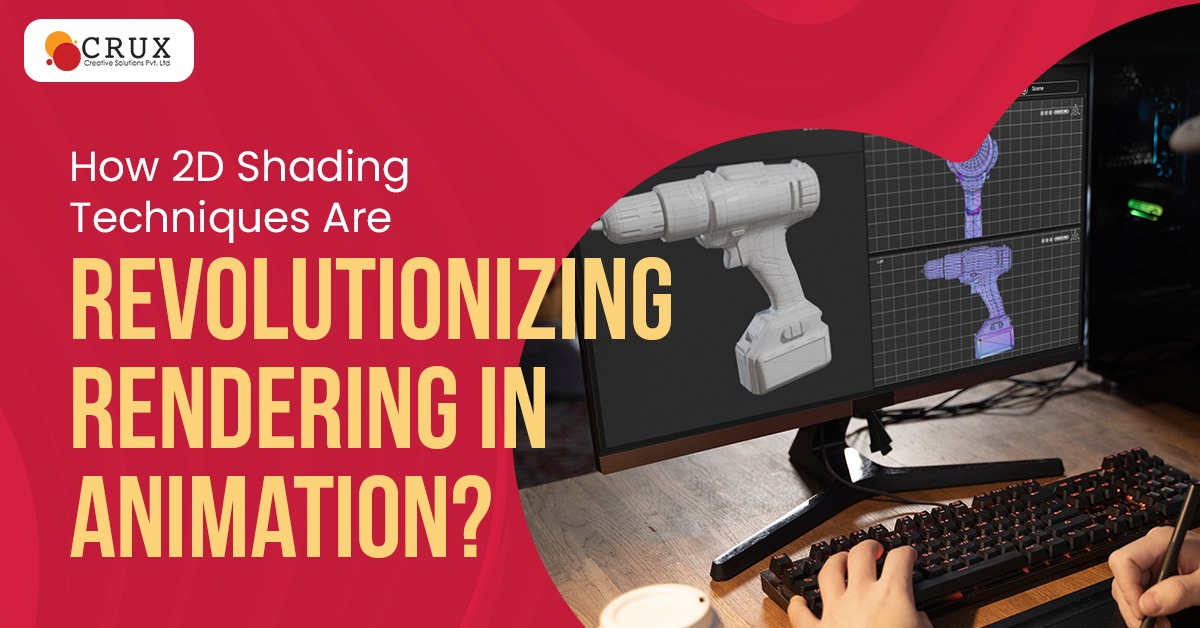
Internal Links Vs. External Links: What’s The Difference?
Picture this: You've invested thousands of rupees in creating a beautiful website, filled it with valuable content, and launched it with high hopes. Months pass, but your organic traffic remains disappointingly low. Your competitors seem to effortlessly outrank you, despite having similar content quality. You're left wondering what crucial element you're missing in your digital strategy.
This scenario plays out for countless businesses every day. The culprit? A fundamental misunderstanding of how links work in SEO. Most website owners focus solely on getting external links from other websites, completely overlooking the goldmine sitting right under their nose – their own internal linking structure.
The Painful Reality of Poor Link Strategy
Here's the harsh truth: without a proper understanding of internal and external links, your website is like a library with no catalog system. Visitors and search engines struggle to navigate your content, valuable pages remain buried in obscurity, and your SEO efforts yield minimal results. Every day you delay implementing a strategic linking approach, you're essentially handing over potential customers to competitors who understand this critical ranking factor.
The consequences extend beyond just search rankings. Poor internal linking creates a frustrating user experience, increases bounce rates, and reduces the time visitors spend on your site. Meanwhile, an absence of quality external links signals to search engines that your content lacks authority and credibility in your industry.
Your Solution: Mastering the Art of Strategic Linking
The good news? Understanding and implementing both internal and external linking strategies can transform your website's performance dramatically. When executed correctly, these linking techniques work together to boost your search rankings, improve user experience, and establish your website as an authoritative resource in your field. Let's dive deep into the world of links and discover how to leverage them for maximum impact.
Understanding Internal Links: Your Website's Navigation System
Internal links are hyperlinks that point from one page on your website to another page within the same domain. Think of them as the roads connecting different neighborhoods in your digital city. These links help users navigate your site while simultaneously telling search engines about your content structure and page importance.
When you link from your homepage to your services page, or from a blog post to a relevant product page, you're creating internal links. These connections serve multiple purposes: they guide visitors through your content journey, distribute page authority throughout your site, and help search engines understand your content hierarchy.
Internal links are completely under your control. You decide which pages to link to, what anchor text to use, and how many links to include. This control makes internal linking one of the most accessible and cost-effective SEO strategies available to any website owner.
The Power of External Links: Building Digital Relationships
External links, also known as outbound links, point from your website to pages on different domains. These links are like recommendations or citations in academic papers – they show that you've done your research and are willing to reference other authoritative sources.
There are two types of external links to consider: links you create to other websites (outbound links) and links other websites create to your site (inbound links or backlinks). Both play crucial roles in your SEO strategy, though they serve different purposes and require different approaches.
When you link to reputable sources like industry publications, research studies, or complementary businesses, you're providing additional value to your readers while demonstrating your content's credibility. These outbound links can actually improve your search rankings when used strategically.
Key Differences Between Internal and External Links
The fundamental difference lies in destination and control. Internal links stay within your website's ecosystem, while external links venture into the broader internet. This distinction creates several important implications for your SEO and user experience strategies.
- Control and Management: You have complete control over internal links – their placement, anchor text, and destination pages. External links, particularly those pointing to your site from other domains, are largely outside your direct control. You can influence them through outreach and content marketing, but you cannot guarantee them.
- SEO Impact: Internal links help search engines understand your site structure and distribute authority between your pages. They're crucial for helping new content get discovered and indexed quickly. External links from reputable sites act as votes of confidence, significantly boosting your domain authority and search rankings.
- User Experience: Internal links keep visitors engaged within your website ecosystem, potentially increasing page views and time on site. External links can provide additional value but risk taking users away from your site. The key is strategic placement and opening external links in new tabs when appropriate.
Internal Linking Best Practices
Creating an effective internal linking strategy requires thoughtful planning and consistent execution. Start by conducting a content audit to understand your existing page structure and identify linking opportunities.
- Anchor Text Optimization: Use descriptive, keyword-rich anchor text that clearly indicates what users will find on the destination page. Instead of generic phrases like "click here" or "read more," use specific descriptions like "comprehensive guide to digital marketing" or "advanced SEO techniques."
- Link Hierarchy and Flow: Create a logical linking hierarchy that guides users from general topics to specific information. Your homepage should link to main category pages, which then link to subcategories and individual content pieces. This creates a clear information architecture that benefits both users and search engines.
- Strategic Link Placement: Place internal links naturally within your content where they add genuine value. Links within the main content body carry more weight than sidebar or footer links. However, don't overdo it – too many links can dilute their impact and create a poor user experience.
External Linking Strategies That Work
External linking requires a more nuanced approach since it involves relationships with other websites and careful consideration of where you send your traffic.
- Quality Over Quantity: Focus on building relationships with high-authority websites in your industry rather than pursuing numerous low-quality links. A single link from a respected industry publication carries more weight than dozens of links from irrelevant or spammy sites.
- Content-Based Outreach: Create valuable, linkable content that naturally attracts external links. Research studies, comprehensive guides, and industry insights are more likely to earn organic backlinks than promotional content. When working with a Best SEO Company In Gurgaon, they can help identify content opportunities that attract natural links.
- Strategic Outbound Linking: Don't hesitate to link to authoritative external sources when they add value to your content. This practice can actually improve your search rankings by demonstrating content quality and relevance. Just ensure external links open in new tabs to keep visitors on your site.
Technical Considerations for Link Implementation
Both internal and external links require technical attention to maximize their SEO benefits and ensure proper functionality across all devices and browsers.
Link Attributes and Tags
Use appropriate HTML attributes like "nofollow" for paid links or user-generated content, and "noopener" for external links opening in new tabs. These attributes help search engines understand your linking intentions and protect your site from potential security issues.
Mobile Optimization
Ensure all links work properly on mobile devices and are easy to tap on touchscreens. This is particularly important as mobile traffic continues to dominate web usage. A website development company in Gurgaon can ensure your linking structure is mobile-friendly and responsive.
Page Loading Speed
Monitor how your linking structure affects page loading times. Too many links or improperly optimized linked resources can slow down your site, negatively impacting user experience and search rankings.
Measuring Link Performance and Impact
Tracking the effectiveness of your linking strategy requires monitoring various metrics and using appropriate analytics tools.
Internal Link Metrics
Monitor which internal links generate the most clicks, how they affect user flow through your site, and whether they improve page rankings for target keywords. Google Analytics and Google Search Console provide valuable insights into internal link performance.
External Link Analysis
Track the quality and quantity of external links pointing to your site using tools like Ahrefs, SEMrush, or Moz. Monitor changes in domain authority, referring domains, and the impact of new backlinks on your search rankings.
User Engagement Metrics
Analyze how linking strategies affect user behavior metrics like bounce rate, time on site, and pages per session. Effective linking should improve these engagement signals, which indirectly benefit your search rankings.
Common Linking Mistakes to Avoid
Many website owners make critical errors that undermine their linking efforts and potentially harm their search rankings.
Over-Optimization
Using the exact same anchor text repeatedly for internal links can appear manipulative to search engines. Vary your anchor text naturally while maintaining relevance and clarity.
Broken Links
Regularly audit your website for broken internal and external links. Broken links create poor user experiences and can negatively impact your search rankings. Use tools like Screaming Frog or Broken Link Checker to identify and fix broken links promptly.
Irrelevant Linking
Linking to irrelevant pages, whether internal or external, confuses users and search engines. Every link should provide genuine value and logical connection to the surrounding content.
The Role of Professional SEO Services
While understanding linking principles is important, implementing a comprehensive linking strategy requires expertise, time, and specialized tools. Many businesses find success by partnering with professionals who can develop and execute strategic linking campaigns.
Working with a best digital marketing agency in Gurgaon provides access to advanced SEO tools, industry connections for link building, and expertise in avoiding common pitfalls. These professionals can audit your current linking structure, identify opportunities, and implement strategies that deliver measurable results.
Companies like Crux Creative Solutions combine technical SEO expertise with creative content strategies, ensuring your linking efforts support broader marketing objectives while adhering to search engine best practices.
Future of Linking in SEO
As search engines become more sophisticated, the importance of natural, high-quality linking continues to grow. Artificial intelligence and machine learning algorithms are getting better at identifying manipulative linking practices while rewarding websites that create genuine value through their linking strategies.
The trend is moving toward E-A-T (Expertise, Authoritativeness, Trustworthiness), where links serve as signals of credibility and expertise rather than just ranking factors. This means focusing on building real relationships, creating valuable content, and earning links through merit rather than manipulation.
Building Your Comprehensive Linking Strategy
Success with linking requires a holistic approach that considers both internal and external opportunities. Start by optimizing your internal linking structure to ensure search engines can effectively crawl and understand your content hierarchy.
Simultaneously, develop a content strategy that naturally attracts external links while strategically reaching out to relevant websites in your industry. Remember that linking is a long-term investment – consistent effort over time yields the best results.
Conclusion
Understanding the difference between internal and external links is just the beginning. The real value comes from implementing strategic linking practices that improve user experience while signaling authority and relevance to search engines.
Internal links give you immediate control over your site's structure and user flow, while external links build your domain's authority and credibility over time. Both are essential components of a comprehensive SEO strategy that drives organic traffic and business growth.
Frequently Asked Questions
Q1: How many internal links should I include on each page for optimal SEO?
There's no magic number, but focus on quality over quantity. Include 2-5 contextually relevant internal links per 1000 words of content. Avoid overwhelming readers with excessive links that disrupt reading flow. Each internal link should serve a clear purpose – guiding users to related content or supporting information. Monitor user behavior metrics to determine if your linking density enhances or hinders engagement rates.
Q2: Do external links to other websites hurt my SEO rankings?
No, strategic external links actually improve your SEO when linking to authoritative, relevant sources. Search engines view outbound links to quality sites as credibility signals. However, use "nofollow" attributes for paid links or untrusted sources. Limit external links to 1-3 per page and ensure they open in new tabs to retain visitors on your site.
Q3: Should I prioritize getting backlinks or improving internal links first?
Start with internal links since they're completely under your control and provide immediate benefits. Fix your internal linking structure before pursuing external backlinks, as it helps search engines better crawl and understand your content. A strong internal foundation makes external link-building efforts more effective. Well-structured internal links also improve user experience and conversion rates significantly.
Q4: How do I know if my current linking strategy is working effectively?
Monitor key metrics like organic traffic growth, average session duration, pages per session, and bounce rates through Google Analytics. Track internal link click-through rates and user flow patterns. For external links, use tools like Google Search Console to monitor backlink quality and quantity. Rising keyword rankings and increased referral traffic indicate successful linking strategies.
Q5: Can too many internal links on a page dilute their SEO value?
Yes, excessive internal linking can dilute link equity and create poor user experience. Search engines may ignore or devalue pages with unnaturally high link counts. Focus on strategic placement within main content rather than stuffing links everywhere. Each link should provide genuine value to readers. Quality contextual links within content body carry more weight than navigation or footer links.














